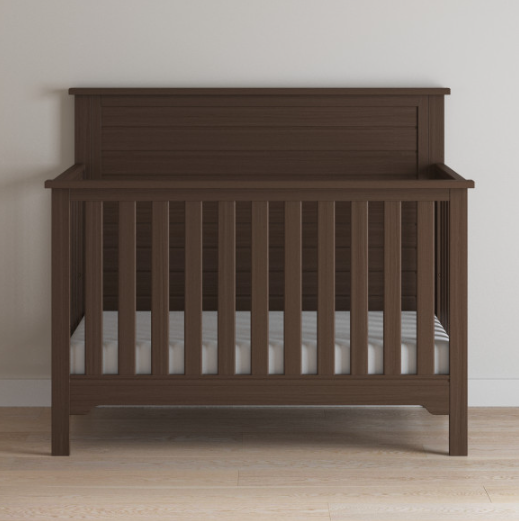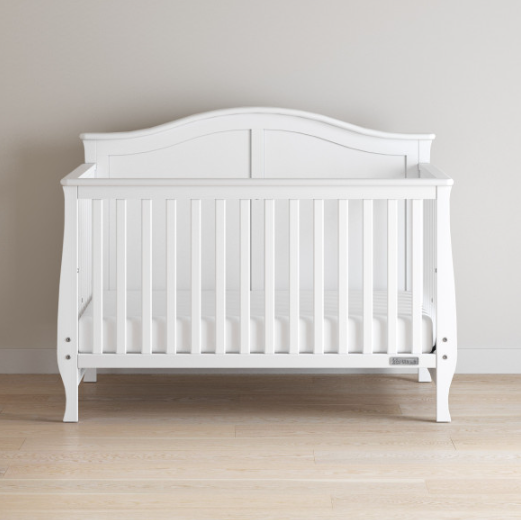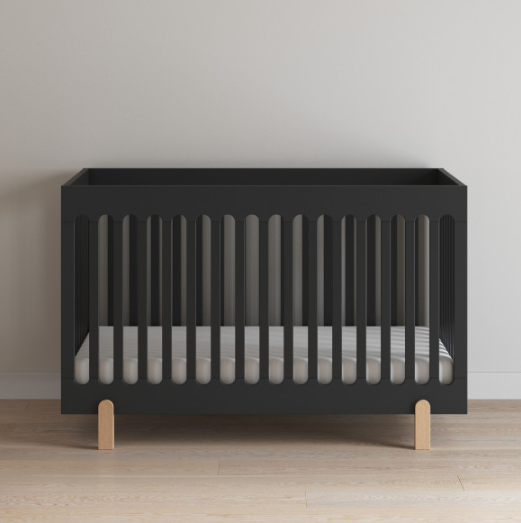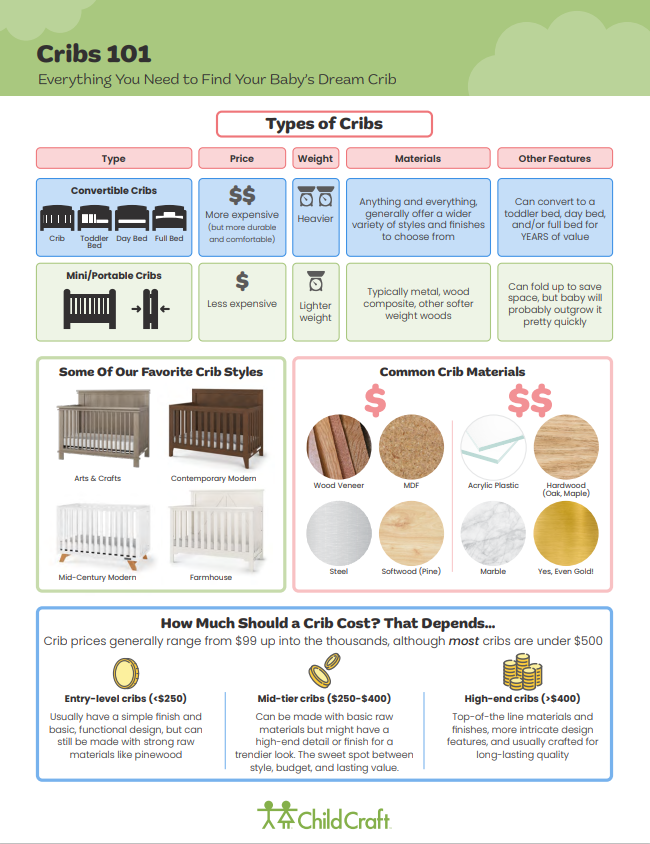Ultimate Crib Guide: How to Find the Perfect Crib
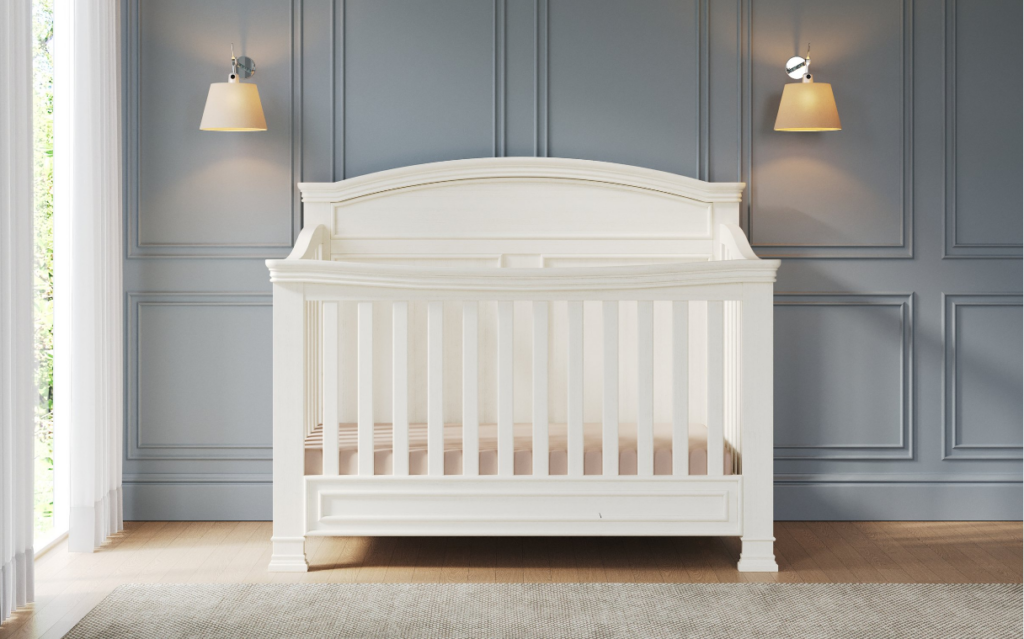
Ultimate Crib Guide: How to Find the Perfect Crib
Finding the ideal crib for your baby involves a lot more than just picking out a color or style. From budgeting tips to safety checks, our goal is to cover everything you need to know about buying the perfect crib!
What we'll cover:
- Types and styles of cribs
- Budgeting for your crib
- Materials and design features
- Timing for your crib purchase
- Where to shop for cribs
- What's not included with your crib
- Crib safety essentials
Looking for even easier access to our crib guide? Download the full guide to have it with you whenever you need it; screenshot it on your phone for the ultimate shopping companion!
Types of Cribs
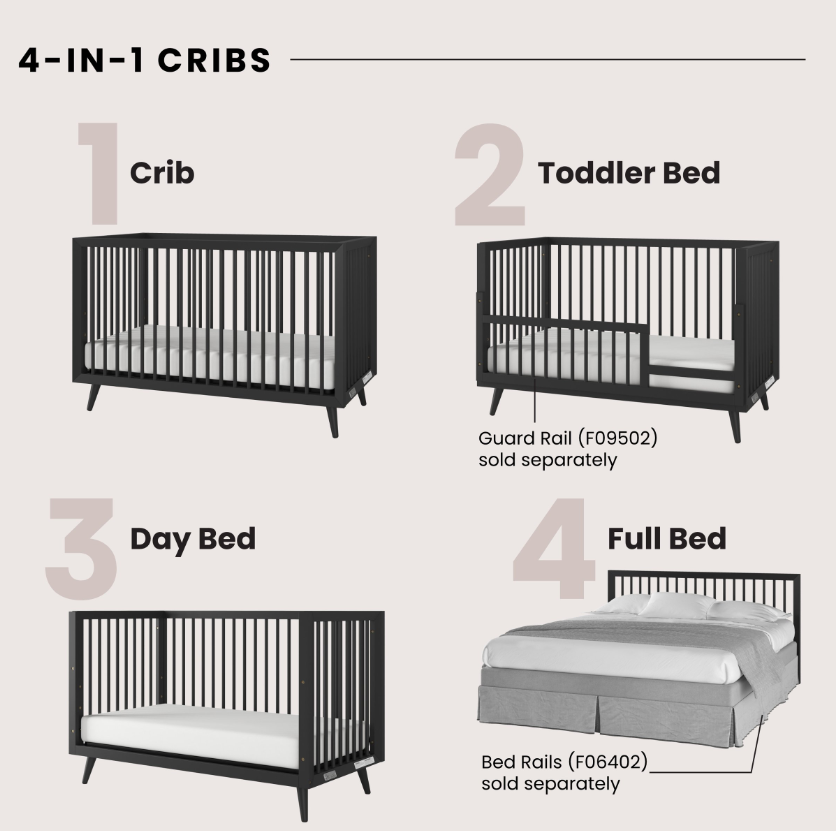
Convertible Cribs
Convertible cribs are typically more expensive than other cribs, but they are more durable and comfortable, and give you a lot more bang for your buck. Most common options are 3-in-1 or 4-in-1 cribs! The four basic configurations include the baby crib, toddler bed, day bed, and full-size bed.
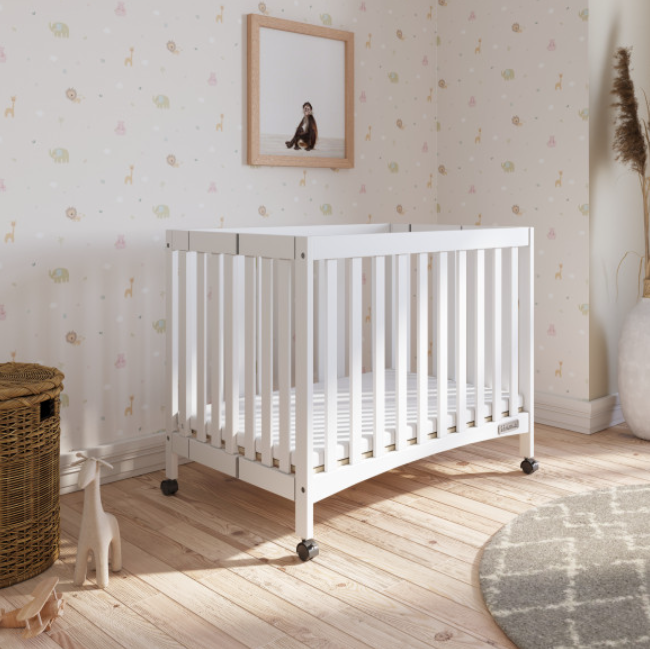
Mini, Portable, or Foldable Cribs
If you’re in a smaller space or on the go often, a mini crib is a space-saving alternative. Mini cribs are lightweight, and some can fold easily while still being sturdy enough for everyday use. This is also a great option for vacation homes, or for Grandma and Grandpa's house.
Popular Crib Styles
Some of our favorite styles of cribs actually match broader design aesthetics. Child Craft has dozens of cribs to choose from; some of our most popular styles include Craftsman, transitional, contemporary, mid-century modern, and modern farmhouse.
Common Crib Materials
More budget-friendly crib materials include wood veneer, MDF (medium-density fiberboard), steel, and softwood like pine. High end cribs are most commonly made out of more expensive materials, like acrylic plastic, hardwoods like maple or oak, marble and sometimes even gold!
How Much Should a Crib Cost?
Crib prices can range anywhere from $99 up into the thousands, although a great majority of cribs are under $500.
Entry level cribs come in $250, and usually have a simple finish and a basic but functional design, and can still be made with strong raw materials like pinewood.
Mid-tier cribs range anywhere from $250 - $400 and can be made with basic raw materials but might have a high-end detail or finish for a trendier look. This is the sweet spot between style, budget, and lasting value.
High end cribs can vary in price but are typically over $400. These cribs are made with top-of-the-line materials and finishes, more intricate design features, and usually crafted for long-lasting quality.
When Should You Buy Your Baby's Crib?
Try to start researching by the sixth month of pregnancy. Talk to friends, read online reviews, and check out cribs in person to get an idea of what you're looking for and what will fit best in your space. We suggest buying your baby crib by the seventh month of pregnancy; this will leave time for shipping, assembly, and - just in case - any returns or exchanges. You want to give yourself enough time to change your mind if you don't like how the crib fits in your space.
Where is the Best Place to Get a Crib?
Online vs. In-store: Online shopping offers nearly infinite options and nursery design ideas, while checking a crib out in person allows you to touch the finish, see colors up close, and test out the sturdiness. There are some pretty great crib deals to be found online, though, and many online retailers offer fast, free shipping and a hassle-free returns process. It never hurts to see cribs in person, but buying online is generally easier for busy parents-to-be.
Second-hand or antique cribs: Unless you know the exact manufacturing date of a second-hand crib, you just can't be certain how safe your little one will be. 100-year-old craftsmanship might be gorgeous, but did they think about slat widths, splinters, and toxic materials back then? Getting a new crib gives you one less thing to worry about, as it will meet 100% of current federal safety regulations.
What Else Do You Need?
You’ll definitely want a crib mattress (we’ve got a handy guide for those, too!), and at some stage you might also want a crib conversion kit (including the all-important toddler guard rail). But honestly, it’s more about what you don’t need: pretty accents like bumpers and pillows can actually be a big safety hazard; the best sleeping surface for a baby is a clear and relatively hard one!
Crib Safety Must-Haves
- Register your crib with the manufacturer: This only takes a couple of minutes, and ensures you'll be notified promptly if there's any sort of safety recall
- Babies should always sleep alone: Keep cribs clear of plush toys and soft bedding, which are both suffocation hazards.
- Avoid crib bumpers: They increase the risk of SIDS and other crib deaths. The only kind to even consider are the thin, breathable, mesh ones (and they're not even that cute, so why take the risk?)
- Ensure cribs have stationary sides: drop sides were banned in 2011
- Crib slats should be no more than 2.375 inches apart
- No cutouts in the crib's headboard or footboard to prevent your baby's head from getting trapped
- Crib mattresses should fit snugly against the inside of the crib: if you can fit more than two fingers between them, it's not snug enough!
- Be sure to visit www.cpsc.gov/safesleep for all crib safety requirements.
Looking for even more information on purchasing the perfect crib? Check out our full guide here, so you can have easy access to it whenever you need it!





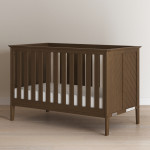 Atwood 3-in-1 Euro Convertible Crib
Atwood 3-in-1 Euro Convertible Crib 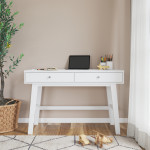 Soho Writing Desk
Soho Writing Desk 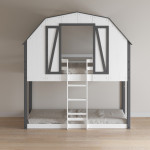 Rustic Barn Twin over Twin Bunk Bed
Rustic Barn Twin over Twin Bunk Bed 